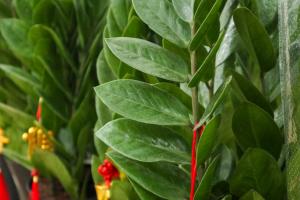What is Eating the Leaves Off My Tomato Plants?
Tomatoes are a popular and delicious part of many gardeners' summer harvest. Unfortunately, tomato plants are frequently attacked by pests that can eat away at their leaves and damage the plant. In this article, we will explore the most common pests that eat tomato leaves and how to identify and control them.
Common Culprits
One of the most common pests that eats tomato leaves is the tomato hornworm. These large, green caterpillars can grow up to 4 inches in length and are easy to spot as they munch on the leaves of your plants. Another common pest is the flea beetle, a small, black beetle that nibbles tiny holes in the leaves. Aphids are another common pest that can be found on tomato plants. These small insects are usually green or black and suck sap from the leaves, causing them to wilt and turn yellow. Other potential culprits include mites, slugs, and snails.
Identifying Pests
The first step in controlling pests that eat tomato leaves is to identify the culprit. Check your plants regularly for signs of damage, and look for the pests themselves. Tomato hornworms are easy to spot because of their large size, but other pests may be more difficult to see. Look for tiny holes in the leaves, wilting or yellowing leaves, or small insects on the plants. You can also place sticky traps near your plants to catch pests in action.
Controlling Pests
There are several steps you can take to control pests that eat tomato leaves. One of the simplest methods is to handpick the pests off the plants. This works well for larger pests like tomato hornworms, but may not be effective for smaller insects like aphids or flea beetles. You can also use insecticidal soap or neem oil to control pests. These natural products are effective against a wide range of pests and won't harm beneficial insects or the environment. Apply the soap or oil directly to the pests or to the leaves of the plant.
If you prefer to use chemical pesticides, be sure to follow the directions carefully and use them sparingly. Some pesticides can harm beneficial insects, such as bees or ladybugs, which can help control the pest population. You can also try companion planting, which involves planting herbs or other plants near your tomatoes that repel pests or attract beneficial insects. Basil, marigolds, and mint are all good choices for companion planting with tomatoes.
Prevention
Prevention is the best defense against pests that eat tomato leaves. Keep your plants healthy and stress-free by watering them regularly, fertilizing them with compost or other organic materials, and pruning them to improve air circulation. Remove any damaged or diseased leaves or fruit, as this can attract pests. You can also cover your plants with row covers or netting to protect them from pests.
In conclusion, there are many pests that can eat the leaves off your tomato plants. By identifying the pest and taking steps to control and prevent it, you can keep your plants healthy and productive. Remember to use natural products and avoid harmful chemicals, and always follow the instructions on any pesticide you use. With a little effort and care, you can enjoy a bountiful tomato harvest all summer long!

 how many times do yo...
how many times do yo... how many planted tre...
how many planted tre... how many pine trees ...
how many pine trees ... how many pecan trees...
how many pecan trees... how many plants comp...
how many plants comp... how many plants can ...
how many plants can ... how many plants and ...
how many plants and ... how many pepper plan...
how many pepper plan...






























